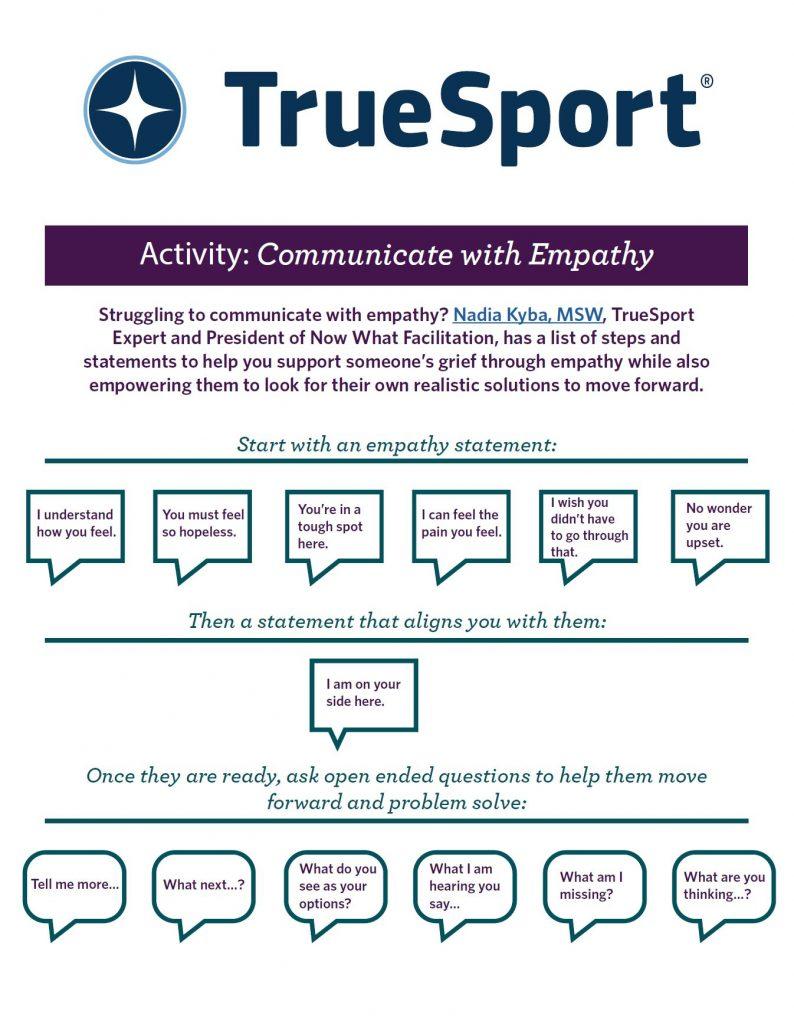Have you ever had a conversation where you felt truly heard and understood? That kind of connection often comes from one key ingredient: empathy. When we communicate with empathy, our words carry a power that transcends mere information. It shows that we not only care about the answers but also about the feelings and experiences behind the questions. In this post, we’re going to explore how you can ensure your questions communicate this essential empathy and care, enhancing your relationships and conversations in the process.
The Importance of Empathy in Communication

Empathy plays a pivotal role in communication. It is not just about what we say, but how we make others feel through our words. Here are a few reasons why empathy is crucial for effective communication:
- Builds Trust: When you communicate with empathy, you create a safe space for others to express themselves. When people feel understood, they are more likely to open up, fostering trust in the relationship.
- Enhances Understanding: Empathy helps you to see things from another person's perspective. By asking questions that reflect this understanding, you can clarify doubts, address concerns, and navigate complex emotions more effectively.
- Encourages Active Listening: When you approach a conversation with empathy, you naturally become a better listener. This active listening makes the other person feel valued, which in turn encourages them to reciprocate.
- Strengthens Relationships: Whether in personal or professional settings, empathetic communication leads to deeper connections. It nurtures relationships and can often diffuse tense situations, leading to more constructive outcomes.
In summary, empathy is not just a soft skill; it's a powerful tool that can transform your interactions. Understanding its importance is the first step in cultivating a conversational style that truly reflects care.
Understanding the Needs of Others

Understanding the needs of others is a vital step in fostering empathy and care in our conversations. It's not just about hearing the words they're saying; it's about tuning into their emotions and perspectives. This deeper understanding can help guide how we communicate and support them. So, let’s break it down.
- Practice Active Listening: This means really focusing on what the other person is saying without planning your response while they're talking. Nodding, maintaining eye contact, and occasionally summarizing what you’ve heard can all signal that you’re engaged.
- Acknowledge Their Feelings: Validating someone’s feelings shows you care. Phrases like, “That sounds really tough,” or “I can understand why you’d feel that way,” can provide tremendous relief to the other person.
- Ask Open-Ended Questions: Rather than yes or no questions, ask ones that invite them to share more about their experience. For example, “How did that situation make you feel?” opens the door for more in-depth conversation.
- Be Observant: Pay attention to non-verbal cues like body language and facial expressions. These can often tell you a lot about how someone is feeling beyond their spoken words.
- Check In Regularly: It’s not always possible to know what someone needs unless you ask. Regular check-ins can ensure that you aren’t missing out on their evolving emotional landscape.
By making an effort to truly understand the needs of others, you're laying the groundwork for more meaningful and empathetic conversations.
Techniques for Crafting Empathetic Questions

Crafting empathetic questions can significantly enhance your interactions and ensure that your inquiries reflect genuine care and understanding. This isn’t just about asking the right thing—it's about asking in the right way.
| Technique | Explanation |
|---|---|
| Use “I” Statements | Framing questions with "I" makes the conversation more personal. For example, “I’ve noticed you seem a bit down; is there anything you’d like to talk about?” |
| Pose Curiosity-Driven Questions | Engage their curiosity about sharing. Ask things like, “What’s been on your mind lately?” This shows you’re interested in their thoughts and feelings. |
| Encourage Sharing | Invite them to share their experiences with prompts like, “Can you tell me more about how that affected you?” This approach can uncover layers of emotion they may want to express. |
| Be Sensitive to Context | Consider the situation before asking. Adjust your tone and word choice if the person is in a vulnerable state; gentler phrasing can foster openness. |
| Follow Up | If someone opens up to you, make sure to follow up later. Ask something like, “How are you feeling about that now?” This shows continued investment in their well-being. |
When you use these techniques, you’re not just asking questions; you're opening the door to connection, understanding, and deeper relationships. Remember, the goal is to show that you truly care and want to support them.
5. Active Listening as a Component of Empathy
When it comes to showing empathy, active listening is like the backbone of a meaningful conversation. It's more than just hearing the words that someone is saying; it's about being fully engaged and present. So, what does active listening entail? Let's dive into it!
First off, active listening means giving your full attention to the speaker. This might sound simple, but in our fast-paced world of notifications and distractions, it’s surprisingly tough to pull off. Here are some key elements:
- Eye Contact: Looking at the person shows you’re focused on them and what they’re expressing.
- Appropriate Nods: Small gestures like nodding can signal understanding and encourage the speaker to continue.
- Verbal Affirmations: Phrases like “I see” or “That makes sense” lets the speaker know you're engaging with them.
- Summarizing: Repeating back what the speaker has said in your own words can confirm that you’ve understood their point correctly.
- Being Non-judgmental: Keep an open mind and avoid jumping to conclusions; this creates a safe environment for sharing feelings.
When you actively listen, you're not just hearing; you're processing and responding with empathy. This lays the groundwork for asking questions that are genuinely caring and understanding. Remember, empathy isn't a mere reaction; it’s a combination of being present and responding to someone’s feelings appropriately. So, the next time you’re in a conversation, take a deep breath and focus on truly listening!
6. Examples of Empathetic Questions
Asking the right questions can illuminate your care for someone’s feelings, but what do empathetic questions even look like? They’re essentially designed to open up the conversation and invite someone to share more about their experience. Let’s explore some examples that are sure to resonate!
- “How did that make you feel?” This encourages them to dive deeper into their emotions.
- “What can I do to support you right now?” This conveys a willingness to help and involves them in the process.
- “Can you tell me more about what happened?” It shows genuine interest in their story and allows them to share details.
- “Is there anything you wish I understood better?” This kind of question invites them to express their needs for clarity.
- “That sounds really tough; how are you coping with it?” Here, you’re acknowledging their struggle while prompting them to reflect on their resilience.
It's important to remember that empathetic questions are not meant to rush the speaker or steer the conversation to a conclusion. Instead, they create a safe space where feelings can be shared freely. When you ask such questions, you're not just scratching the surface; you're digging deep into understanding. So, the next time you connect with someone, consider how you can weave in these types of questions to truly show your empathy and care!
How to Ensure Your Questions Communicate Empathy and Care
In a world where communication often lacks depth and sensitivity, it is crucial to frame our questions in a way that conveys empathy and care. This not only fosters trust but also promotes open dialogue. Here are some effective strategies to ensure that your inquiries are received positively.
1. Be Mindful of Your Language:
- Use gentle and inviting words. Avoid harsh or accusatory language.
- Incorporate phrases like “I understand” or “It sounds like” to express empathy.
2. Non-Verbal Cues Matter:
- Maintain eye contact to show you are present and engaged.
- Utilize open body language; avoid crossing your arms or appearing distracted.
3. Ask Open-Ended Questions:
Instead of yes/no questions, frame your inquiries to invite elaboration:
- For example, instead of asking, “Are you okay?” consider, “How are you feeling about what happened?”
- This approach encourages sharing and demonstrates your genuine concern.
4. Practice Active Listening:
Engagement goes beyond questioning:
- Paraphrase what the other person says to show that you are listening.
- Remain patient, allowing the individual to express themselves fully before responding.
5. Follow Up:
- After a discussion, follow up with a question or message to show continued care.
- This reinforces that you value their feelings and thoughts.
By adopting these strategies, you can create an environment where individuals feel safe and valued. In doing so, your questions will not only seek information but also demonstrate a profound sense of empathy and care.
Conclusion: Implementing these techniques in your daily interactions can transform your communication, making it more compassionate and supportive, thus deepening relationships and fostering a greater sense of community.
 admin
admin








